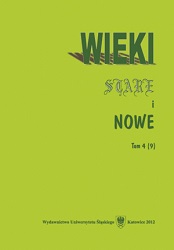Górnośląskie drapacze chmur — epizod architektoniczno-propagandowy lat międzywojennych na Górnym Śląsku
The Upper-Silesian skyscrapers — an architectural-propaganda episode of the inter-war period in the Upper Silesia
Author(s): Piotr RygusSubject(s): History
Published by: Wydawnictwo Uniwersytetu Śląskiego
Summary/Abstract: The 1922 division of Upper Silesia between two states hostile towards each other put the region in the face of new challenges. The created situation could not go on with no response from the local authorities aiming at forming the better image from the one that had been observed behind the nearby border. One of the elements of those efforts was architecture. The plan of distinguishing constructions that were built compounded by the economic specificity of the industrial region resulted in adopting tower blocks into local architectural space. The first projects of “sky scrapers” were created in 1927 in the city of Hindenburg (Zabrze) laying at the German side. They constituted a part of bigger project which aim was building a impressive-looking city centre. Of the initiative of the city architect Moritz Wolf, the author of one of the city centre’s conceptions, three famous German architects were invited to work in the phase of project: Hans Poelzig, Max Berg and Paul Bonatz. The effect of their actions were three different visions of the “City” of Zabrze with skyscraper crowning them. However, the economic situation of the city prevented the final realization of any of the projects. Building of the first “sky scraper” at the Polish side was started in 1929. The house in Wojewódzka Street 23 in Katowice, designed by Eustachy Chmielewski, was a pioneer project of tower blocks constructions in the area of Poland. The success of the investment caused local investors to build subsequent skyscrapers. In 1934 there was finished a tower block of the tax office in Katowice raised by Silesian Voivode Office, and in 1937 the seat of Communal Savings Fund in Chorzów was put to use. The launch of World War II thwarted the construction of another buildings.
Journal: Wieki Stare i Nowe
- Issue Year: 9/2012
- Issue No: 4
- Page Range: 182-221
- Page Count: 40
- Language: Polish

